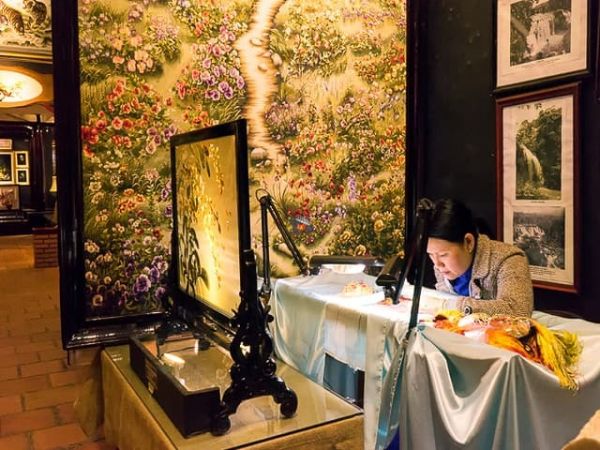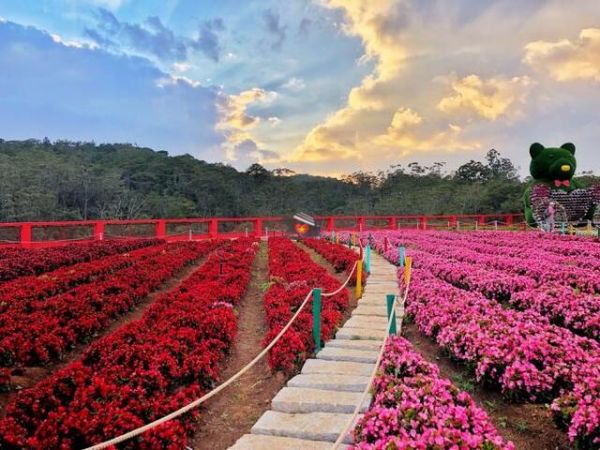NHA TRANG XQ EMBROIDERY

Nha Trang XQ Embroidery History:
In Vietnam, embroidery is a traditional craft that has a long history. The history of this traditional profession is inherently linked to the spiritual history of Vietnamese women in the past.
However, so far no one knows, when did Vietnamese embroidery become? Who was the first person to have the idea of turning sewing, embroidery into an art career?
Legend has it that, at the beginning of the seventeenth century, Vietnamese embroidery was marked a new development turning point. At that time, Mr. Le Cong Hanh, (born January 18, 1960 - died on June 12, 1661) in Quat Dong village, Quat Dong commune, Thuong Tin district, Ha Tay province summarized experiences and embroidery techniques.
Until feudal times, embroidery was one of the jobs for the King and nobility. Embroidery products are made of fabric thread by the creative effort of Vietnamese artisans. The threads were then dyed by hand-made formula with all-natural materials such as brown tubers, indigo, almond bark, scallops, fig leaves, grindstones, flowers ... that make foreigners feel cold. to identify that: "Looking at the dyed watercolors of the workers found it very simple, unexpectedly, when the dyeing was completed, it was enough to have an extremely strange color palette that seemed like a new magic spell." During that period, the embroidery was usually brief by Vietnamese women.

According to the Confucian concept, the girl had to perfect the four virtues: "Cong, Dung, Delicious and Hanh" as the old people once said:
“Boys read books reciting poetry
Girls are just embroidering and sewing needles”
The vast majority of women across the country know how to embroider, but focus and professionalism have long been in Hue. When the Nguyen Dynasty was built in Hue, Mrs. Hoang Thi Cuc, the mother of King Bao Dai, together with Nam Phuong Hoang Hau combined the advantages of European embroidery techniques with the quintessence of Asian embroidery. to turn it into the embroidery art of the Imperial Palace, associated with the delicate, delicate, and meticulous characteristics of Hue's daughter.
Gabrielle, a French scholar who specializes in Asian cultural studies, wrote: "Many places have passed on to their descendants the strange professions of drawing pictures by making lotus, cotton blooming on silk, making butterflies hovering on the clear blue water, An Nam embroider is more skillful than Chinese embroiderer on needle thread and color mixing"
Hocquard authored a book on embroidery at the end of the nineteenth century said: "Vietnamese embroiderers are very skillful in distributing colors on silk, to have harmonious embroidery pictures. Over the centuries of ups and downs, embroidery has sometimes been up and down but it still retains the long-standing cultural identity of the nation.

In the early 90s, in the twentieth century, Vietnamese silk embroidery reached the peak of art. When XQ began, the artist, artisan Vo Van Quan and Hoang Thi Xuan created a new direction for the profession by combining the characteristics of art with the quintessence. of traditional embroidery technique that Hoang Thi Xuan - from a Hue family - inherited and created.
Today, hand embroidery on Vietnamese XQ silk is closely linked to various forms of music, poetry, painting. Through the themes of life - death - hope - hidden convictions and the attributes of the human condition, the art of embroidery has brought about something of the vision of our world, by the image of a realm of music and that can be noted by traditional national art.














